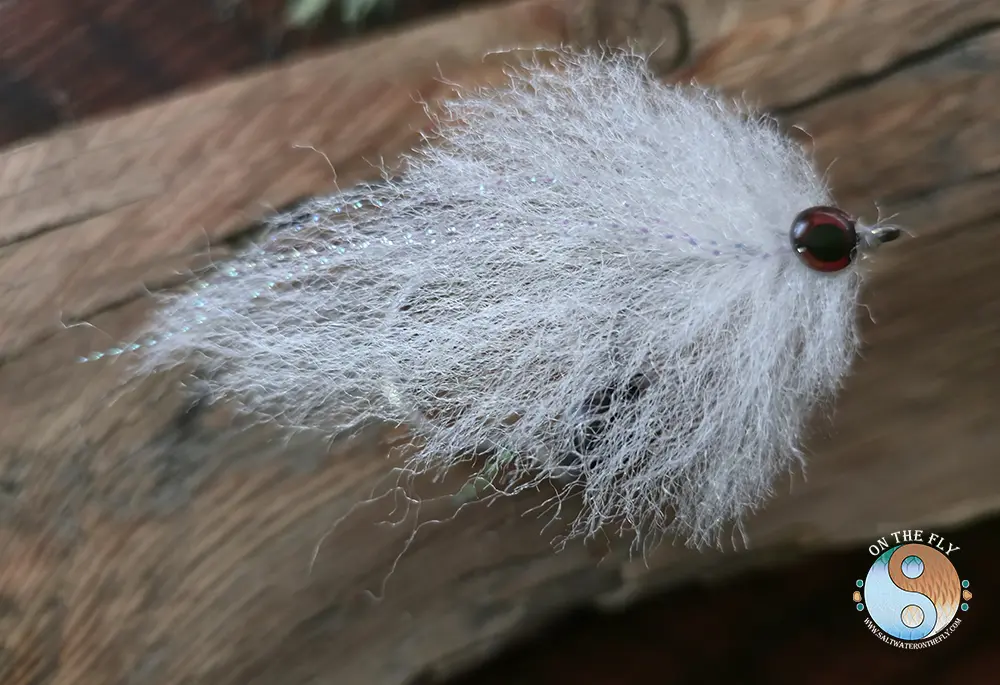Top Spots to Fly Fish Long Island and Montauk for Striped Bass
Fly Fishing Long Island and Montauk Striped Bass are prime locations for exceptional fly fishing experiences. What many don’t realize is that this area boasts some of the world’s best fly fishing for striped bass. With a diverse marine ecosystem and Long Island’s unique geography, this region is a haven for striper fishing, offering numerous top spots to fly fish for striped bass.
The powerful nature of these fish makes fly fishing for them an exciting venture for those involved in recreational marine fishing. If you’re looking for an adventure on the water and a fresh way to catch these impressive stripers, we have the information you need. This guide offers insights and tips for planning a successful fly fishing trip to the top spots in Long Island and Montauk for Striped Bass.
Table of Contents
When to Go Fly Fishing for Striped Bass
The best time for striped bass fishing on Long Island and Montauk is from April to December, with the peak season being May through October. During these months, the waters become a striper hotspot.
It’s an excellent period to fish because the bass are highly active, making them easier to catch. Many local anglers find success during this time.
Where to Go for Top Spots to Fly Fish Long Island and Montauk for Striped Bass
Long Island and Montauk boast several hotspots ideal for catching these “linesiders.” Montauk Point State Park is a top choice, featuring a rugged coastline where stripers often gather.
Another great location is Block Island, close to Montauk. It provides fantastic fly fishing opportunities due to the dynamic water currents that attract both bass and fly fishermen.
The South Shore: A Fly Fisher’s Playground
The South Shore beaches and bays present numerous chances to practice your fly fishing skills. The varied terrain accommodates those who enjoy casting from sandy beaches and those who prefer quiet bays.
Imagine wading in the gentle surf at Jones Beach State Park, with flies dancing on the water. This spot attracts anglers looking for lively surface action.
Robert Moses State Park features fishing piers and beaches. Picture yourself casting along rocky shores where larger, more experienced bass tend to hide.
Freeport, along the “Nautical Mile,” offers surprisingly ideal conditions for evening fishing. The busy waterways create a perfect setting for hooking large stripers as they start their evening feeding.
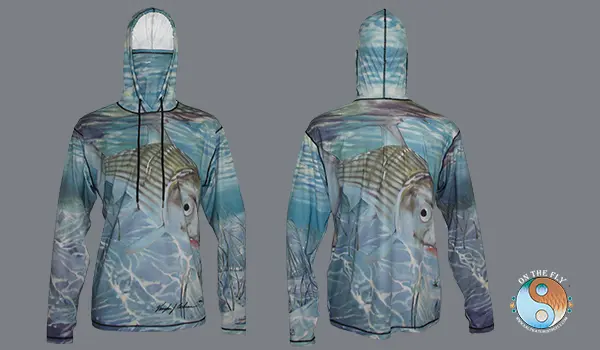
On the Water Fly Fishing Apparel
Light-weight Sun Protective Graphic Hoodie is a great outer Layer and base layer. UPF-50 with a sewn in Facemask. Good Pair of Sun Protective Graphic Fly Fishing Gloves with a sewn in stripping finger guard.
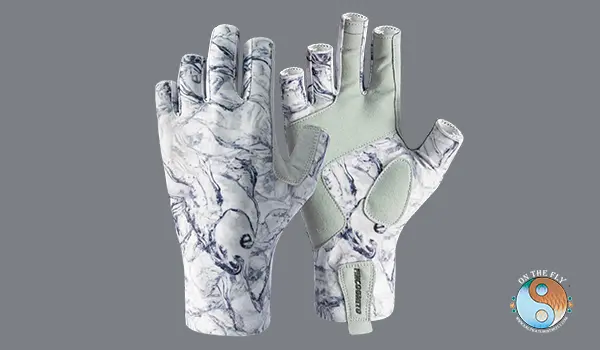
The North Shore: Calm Waters and Bountiful Stripers
The North Shore includes locations like the Peconic River and Gardiners Bay. These estuaries combine beauty and abundant marine life, attracting fly fishers who appreciate both scenery and productive fishing.
Imagine tranquil settings with eager fish. In Huntington Harbor, you can find several hotspots, especially near its entrance.
Northport Harbor is known as a charming striper spot during peak seasons. The less-crowded environment in Oyster Bay makes for a serene fly fishing experience around the bay’s mouth.
Tackle and Gear Needed for Success
Preparing for fly fishing in these waters involves choosing gear that can handle large, strong stripers. You need equipment that’s durable enough for a fight yet sensitive enough to detect lighter strikes.
A 9-10 weight fast action rod offers a good mix of power and control. This helps in battling large fish in the strong currents often found in the best fishing locations. Pair it with a Large arbor saltwater fly reel.
A good reel helps you pull the fish away from any underwater structure after it’s hooked. For fly selection, include a variety of options in your tackle box, such as a half-and-half deceiver.
Clouser Minnow is a Truly Iconic Fly for Long Island Striped Bass
Clouser Minnow is a truly iconic fly, and it’s absolutely deadly for striped bass in New York waters. Here’s a breakdown of tying and fishing this versatile pattern:
Tying the Clouser Minnow
- Hook: Strong saltwater hook, sizes 2 to 3/0 are common for stripers.
- Eyes: Lead or bead chain eyes, medium to large, depending on the water depth and current. These provide weight and give the fly its jigging action.
- Body: Bucktail or similar hair, usually in two colors. A darker color (olive, black, chartreuse) for the back and a lighter color (white, silver, chartreuse) for the belly.
- Flash: Optional, but often adds to the fly’s attractiveness. Krystal Flash or similar material can be added along the sides of the body.
- Thread: Strong tying thread, preferably in a color that matches the body.
Tying Steps
- Start the Thread: Begin by wrapping the thread on the hook shank, creating a base.
- Attach the Eyes: Secure the lead eyes to the top of the hook shank, about one-third of the way back from the eye. Use figure-eight wraps to hold them in place.
- Tie in the Belly: Tie in a clump of lighter-colored bucktail or hair on the underside of the hook shank, extending past the hook bend.
- Tie in the Back: Tie in a clump of darker-colored bucktail or hair on the top of the hook shank, also extending past the hook bend.
- Add Flash (Optional): If using flash, tie in a few strands along the sides of the body.
- Shape the Head: Build up a neat head with your tying thread, covering the wraps and creating a smooth profile.
- Whip Finish: Finish with a whip finish to secure the thread.
- Cement: Apply head cement to the head for durability.
Fishing the Clouser Minnow for Stripers
- Location: Striped bass in New York can be found in a variety of locations, including:
- Surf: Look for areas with structure, such as rocks, jetties, and sandbars.
- Bays and Estuaries: These areas often hold large numbers of stripers, especially during migration.
- Rivers: Stripers will move into rivers to feed on baitfish.
- Presentation: Cast your Clouser Minnow and let it sink to the desired depth.
- Retrieve: Use a variety of retrieves to see what the fish prefer. Some effective retrieves include:
- Slow and Steady: A slow, steady retrieve can be effective when fish are feeding on smaller baitfish.
- Fast and Erratic: A faster, more erratic retrieve can be effective when fish are chasing larger baitfish.
- Jigging: Try jigging the fly along the bottom, imitating a wounded baitfish.
- Strikes: Stripers often strike hard, so be ready to set the hook quickly.
Tips for Success
- Match the Hatch: Try to match the size and color of your Clouser Minnow to the prevalent baitfish in the area.
- Vary Your Retrieve: Experiment with different retrieves to see what works best on a given day.
- Use a Sinking Line: A sinking line can help you get your fly down to the fish in deeper water.
- Fish at Night: Stripers often feed more aggressively at night.
- Be Patient: Sometimes it takes time to find the fish. Don’t get discouraged if you don’t get immediate results.
Where to Find More Information
- Local Fly Shops: Fly shops in New York can provide valuable information on fly patterns, fishing locations, and techniques.
- Online Resources: There are many websites and videos that offer instructions on tying and fishing the Clouser Minnow.
- Fly Fishing Guides: Consider hiring a guide for a day to learn the best techniques for fishing for striped bass in your area.
The Clouser Minnow is a must-have fly for any angler targeting striped bass on Long Island, New York. With a little practice and patience, you’ll be catching fish in no time!
Clouser Minnows and other baitfish pattern catch a lot of striped bass. For a bit more of a challenge fly fishing surface flies, like Gurglers adds an explosive element to the whole proposition.
The Outta the Box Fly Pad is perfect for crabs and small steamer Patterns.
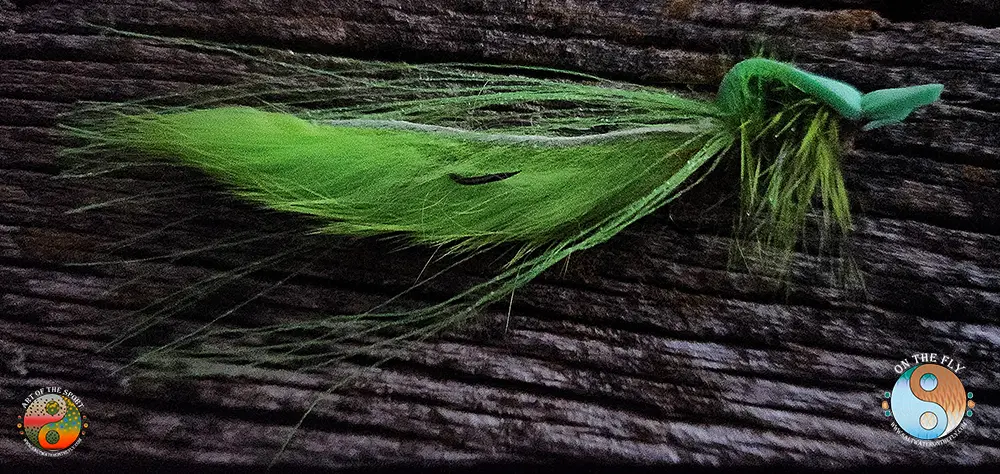
Stripers on the Surface with Gurglers
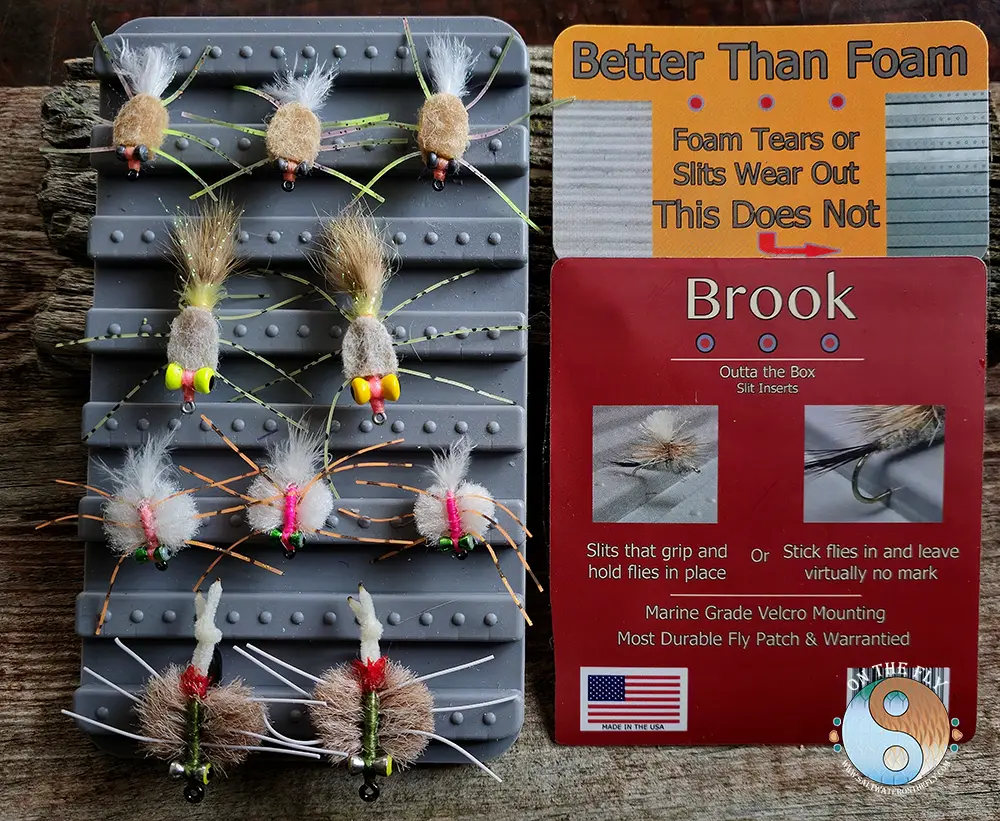
Pad of Crabs for Striped Bass Fly Fishing
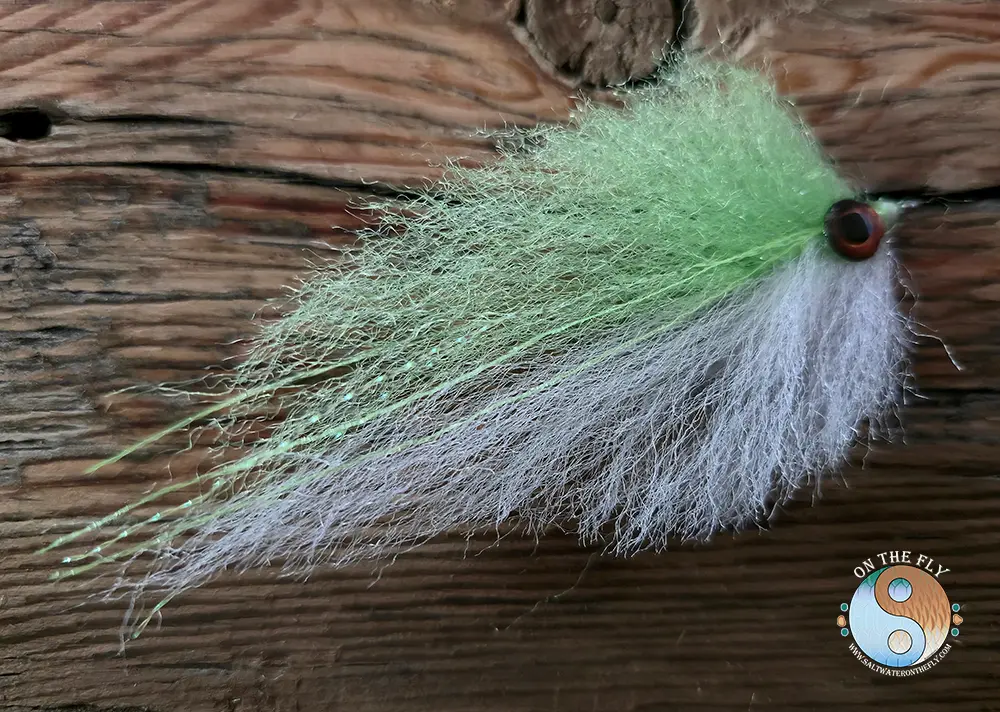

| Fly Type | Description | Conditions |
|---|---|---|
| Deceivers | Baitfish pattern | All conditions |
| White Deceiver | Silver/pearl flash | Clear water, sunny |
| Lefty’s Deceiver | Streamer staple | Most situations |
| Gartin’s T-Bone | Elongated body, larger baitfish | For bigger fish |
| Silveys Streamer | Small baitfish imitation | Calm/rough water |
| Kreelex | Versatile, multi-baitfish | Various |
| Clouser Minnow | White/Chartreuse, multi-use | Shallow/deep |
| Baitfish Leech | Leech for rocks | Rocky/structure |
| Crab Fly | Imitates crabs | Rocky bottoms |
| Blue Crab | Montauk special | Near Montauk |
Your leader must withstand the force and potential abrasion from both feisty fish and the rocky habitat. Therefore, it’s generally recommended to use a 9-12 foot leader with a test strength of at least 15-20 lbs.
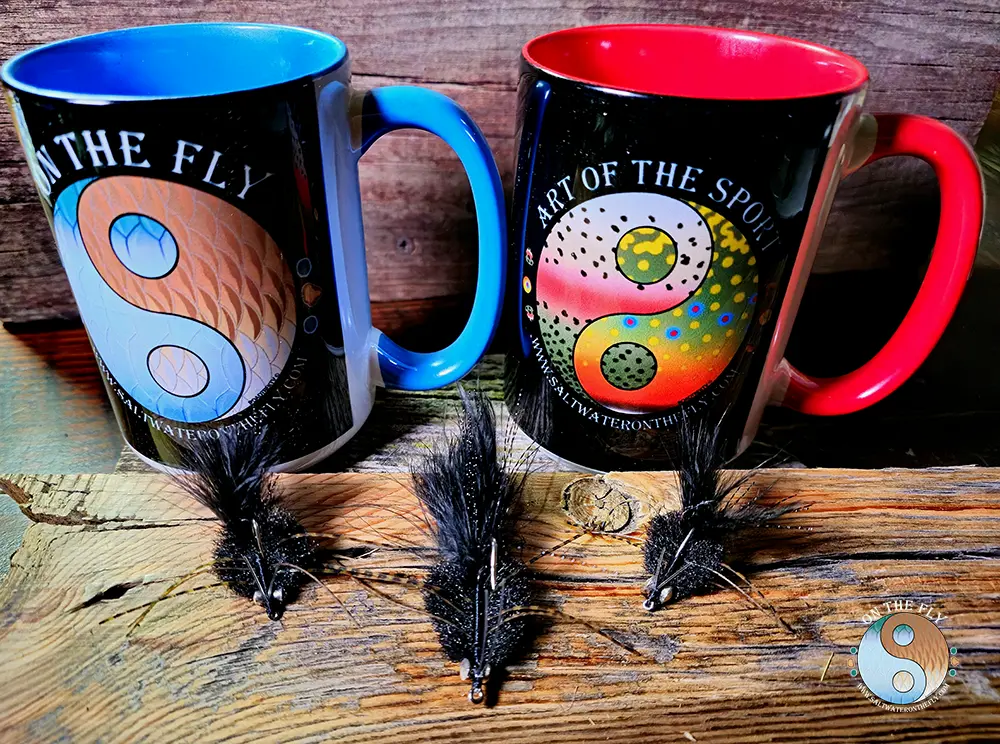
Rock Crab / Yin Yang 15oz. mugs
Text content
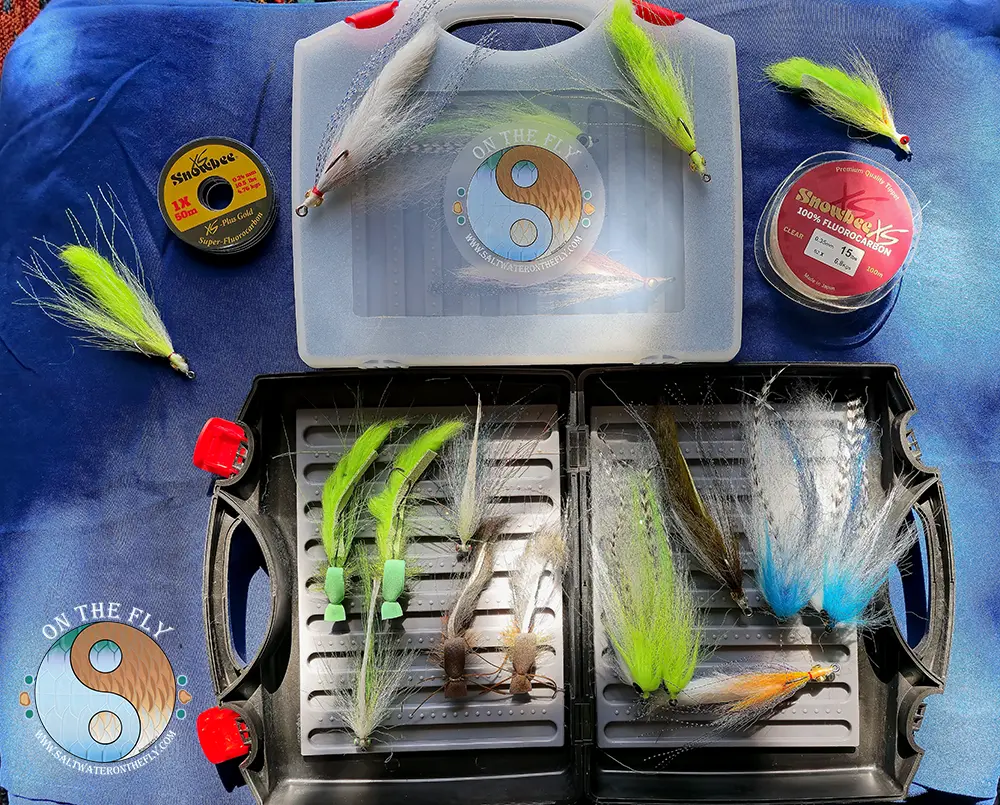
Fly Storage Boxes for Striped Bass Flies
Fly Fish Gardiners Bay for Striped Bass
Gardiners Bay, nestled between the North and South Forks of Long Island, is a fly fisherman’s dream. It’s a haven for striped bass. The bay’s shallow flats, eelgrass beds, and swirling currents create a perfect environment for these fish to feed and grow.
This makes it a prime location for some exciting fly fishing action. But where exactly should you cast your line in this expansive bay? Here are a few sweet spots:
- The flats near Shelter Island: These shallow, sandy areas are prime feeding grounds for striped bass. They hunt for baitfish here, especially during the changing tides. Wade carefully and use a stealthy approach. You’ll increase your chances of hooking a big one.
- The mouth of the Peconic River: Where the river meets the bay, you’ll find a mix of fresh and saltwater. This attracts baitfish and, you guessed it, striped bass. This area can get busy with boat traffic, so be mindful of your surroundings.
- The area around Ram Island: This small island creates structure and disrupts the current. This provides an ideal spot for striped bass to ambush prey. Cast your flies near the edges of the island and along the current breaks.
Now, let’s talk about the best times to fish Gardiners Bay. The striped bass fishing season here typically runs from April to December. But the peak season is May to October. During these months, the water is warmer and the striped bass are more active.
Early mornings and evenings are usually the most productive times to fish. The light is low and the water is cooler. This makes the stripers more likely to feed aggressively. Pay attention to the tides too. Moving water often brings in baitfish, which, in turn, brings in the striped bass.
What flies should you use in Gardiners Bay? Striped bass here feed on a variety of baitfish, so it’s good to have a few different patterns in your fly box.
- Clouser Minnows: These versatile flies imitate a variety of baitfish and work well in different water depths.
- Deceivers: These classic saltwater flies are known for their lifelike swimming action. They can entice even the most stubborn striped bass.
- Sand Eel Imitations: Sand eels are a favorite food of striped bass in Gardiners Bay. Using a fly that mimics this baitfish can be incredibly effective.
So, pack your fly rod, grab your waders, and head to Gardiners Bay for some awesome striped bass fishing! With its beautiful scenery and plentiful fish, it’s a fly fishing experience you won’t soon forget.
Techniques to Master for Fly Fishing Striped Bass
One of the most crucial strategies involves knowing where to present your fly. Techniques vary from beach fishing to calmer estuary waters. The proper casting technique will also improve your results.
Beach fishing involves wading into the surf casting zone. Here you cast where bass tend to feed along the moving tidal water.
If done right, it can lead to exciting strikes, particularly during incoming tides. With some practice, you will gain fishing experience.
Fishing the estuaries around the prime locations on Long Island and Montauk offers access to protected bays. These spots often have fewer anglers competing for space.
According to The Fisherman, these locations truly deserve the title of “Striped Bass Capital of the World.”
Another option, though requiring more equipment, is trolling from a boat or kayak. This allows you to cover more water and reach cruising schools of fish. Consider how your fly moves in different currents and channels where fish are likely to feed.
Keep in Mind Navigating Montauk’s Striper Waters
Montauk is famous for offering a world-class experience to fly fishermen targeting striped bass. With its rocky shores extending into deeper waters, anglers find it an ideal location.
Areas like Montauk Point State Park near the Lighthouse, and spots known as “The Rip,” feature fast-moving currents and rocky areas. Stripers often lurk below the surface in these locations.
Locals advise newcomers, especially fly fishermen, to be prepared for a challenging fight.
To fish in these waters, you’ll need a Recreational Marine Fishing Registry. This ensures compliance with regulations aimed at maintaining sustainable use of shared waters. Completing this step helps ensure you’re fishing legally.
Navigating Montauk’s Striper Waters
Montauk is famous for offering a world-class experience to fly fishermen targeting striped bass. With its rocky shores extending into deeper waters, anglers find it an ideal location.
Areas like Montauk Point State Park near the Lighthouse, and spots known as “The Rip,” feature fast-moving currents and rocky areas. Stripers often lurk below the surface in these locations.
Learn more about New York State Parks.
Locals advise newcomers, especially fly fishermen, to be prepared for a challenging fight.
To fish in these waters, you’ll need a Recreational Marine Fishing Registry. This ensures compliance with regulations aimed at maintaining sustainable use of shared waters. Completing this step helps ensure you’re fishing legally.
Secrets of the South Shore and North Shore
Long Island’s South Shore offers a variety of environments suitable for anglers of all skill levels. From Fire Island inlet, which feature challenging fast waters, to calmer, protected spots like Shinnecock Bay.
Each area provides different opportunities and requires varied techniques. Shore fishing during dusk and nighttime is popular, as noted by Fishing Booker.
The North Shore features quieter spots around historic harbors and the rich waters near Huntington. Be sure to have your fishing gear up to par.
Anglers in these regions are known for fishing quietly. They search the waters for larger striped bass that favor the calm, sheltered bays with rocky, boulder-rich shorelines.
Waters fed by Long Beach Town Park and Flax Pond Tidal Wetland Area are perfect for fishermen. The fishing spots are ideal for those who enjoy less-crowded areas. These natural features add ecological beauty to the angling experience.
Maximizing Your Catch: Practical Tips
Carefully consider local conditions, as this can significantly impact your fishing session. Striped bass respond to tidal movements.
They often become more active during tide transitions. By understanding these changes, you can better position yourself for opportunities when fish forage in different waters. Use the Island Sound to help determine bird activity.
Look for structures like sandbars in shallow areas and rock formations further offshore. They provide strategic cover for bass hunting prey. Understand the surroundings of your cast and what lies beneath the surface. Pay attention to any sand eel activity, and mimic with your lure using a steady retrieve.
Advanced Strategies and Gear Adjustments
Fly fishing involves adapting your strategies based on the setting, weather, and fish behavior. The most successful anglers are adaptable, switching their gear and techniques in real-time to match current conditions.
Nighttime fly fishing along the North Shore, has benefits those who adapt to low-visibility conditions, particularly night and fly fishermen.
It requires good lighting tools for safe navigation through water and changing terrain. You’ll be prepared to adjust your flies and lines as needed.
In murky waters, try using flies with strong visual contrasts, like chartreuse or darker patterns. Doing so ensures fish can easily spot your presentations even in low-visibility conditions. Don’t catch yourself in a situation where you need these items and don’t have them.
Environmental Factors and Conservation
Anyone fishing in Long Island’s waters, especially popular areas like Montauk and nearby shorelines, should recognize the shared benefits between the community and the local ecosystem. Fly fishing inherently connects with nature.
Due to the calming environment, catch-and-release practices are commonly observed to maintain the sustainability of the striper population. Anglers should be familiar with important handling techniques to ensure the safe release of fish and maintain high survival rates.
Simple actions contribute significantly to sustaining these resources for future generations. Proper techniques include minimizing landing times to reduce fish exhaustion. Have tools and gear nearby, and handle live bass with wet hands to protect their sensitive slime coat.
FAQs about Top Spots to Fly Fish Long Island and Montauk for Striped Bass
What size fly rod should I use for striped bass on Long Island and Montauk?
For catching striped bass in these regions, a 9-10 weight fly rod is typically suggested. This rod size provides the necessary balance for casting larger flies effectively.
What are some effective fly patterns for striped bass on Long Island and Montauk?
Effective flies include Deceivers, Clouser Minnows, and various crab patterns. The choice of fly can depend on the specific fishing conditions at the time.
If you’re fishing Montauk, don’t be afraid to test what works for you. No matter what the conditions are, you can always catch something on the right gear, you may just need to adjust a few things like adding a spinning rod.
Do I need any special permits to fish for striped bass on Long Island?
Yes, to engage in saltwater fishing on Long Island, including Montauk, you must enroll in the Recreational Marine Fishing Registry. Be aware that additional permits might be needed for specific areas, especially for night access and parking. It is easy to do and only takes a few minutes. There are no fees associated with it, it is more so to just gather information from Anglers.
If you do not get one, you are subject to large fines from authorities, so be sure to get one. Go to the fishing regulations website to easily obtain your fishing license. Western Long Island does not offer as good as fishing, but can be an okay alternative when the weathers bad in Montauk or the East Coast.
Conclusion of Fly Fish Long Island and Montauk for Striped Bass
For anglers in search of adventure or exploring new waters, Long Island’s waters offer great potential for action. Expect a challenging fight and memorable experiences while exploring the top spots to fly fish for striped bass in Long Island and Montauk.
Understanding and practicing sustainable angling methods ensures enjoyment for all anglers, both now and in the future. This is the closest spot to fish near the Big Apple, which means that many tourists visit each year. So be aware of this as you recommend fishing spots. The high volume of people who fish make Montauk’s striper fishing so great because the bass love all of the different bait fish that come with the diverse ecosystem.

